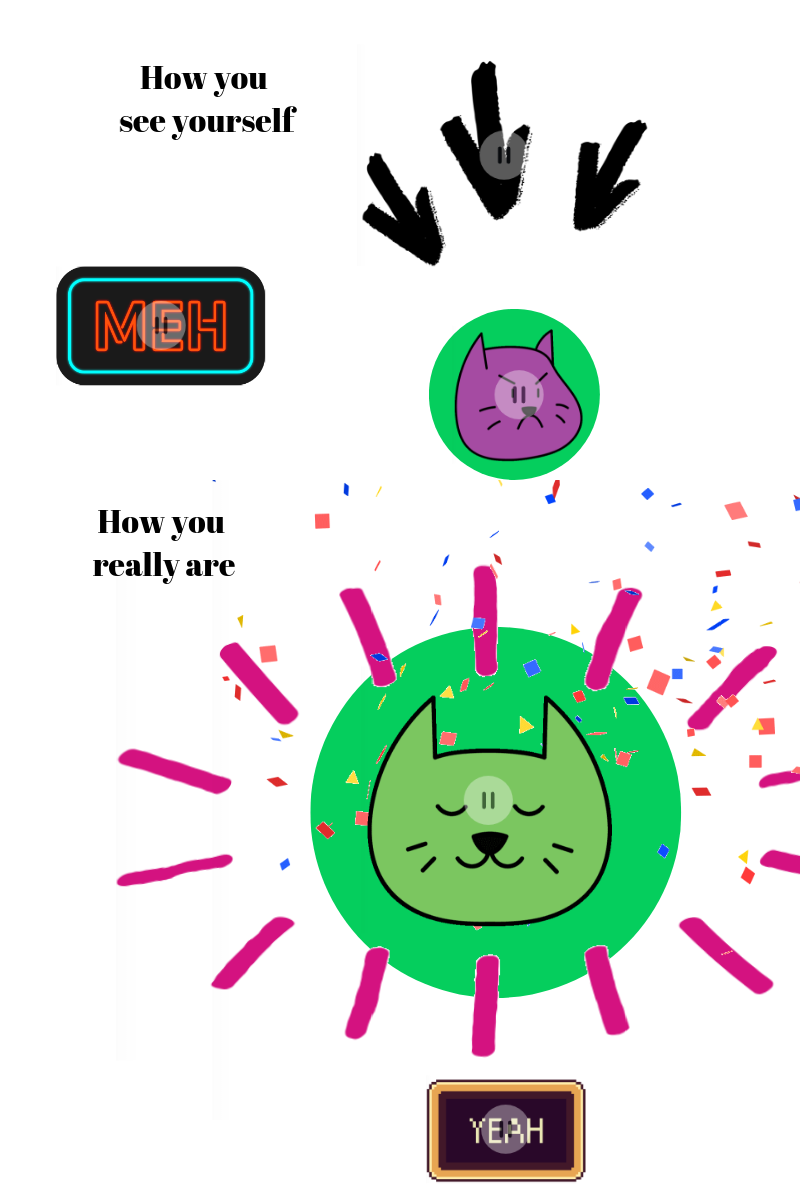Burning Man is a week-long, otherworldly celebration of art, music and self-expression. It kicks off its 32nd year on 26th August 2018 and runs until 3rd September.
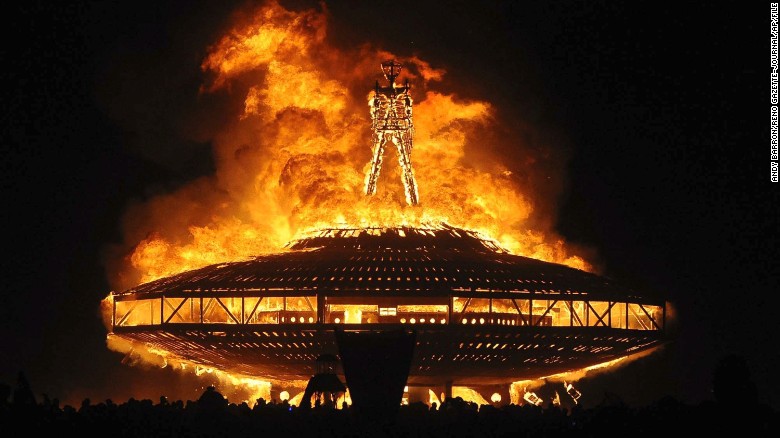
Everything You Need To Know About Burning Man
Burning Man festival started out as just a group of hippies getting together at a dog beach in San Francisco in 1986, but as word of the free festival spread over time, the crowd increased and the event was relocated.
It is now an annual event held at Black Rock City in the Nevada desert. The event draws participants from around the world to create an entire culture from scratch for a week, fueled by blaring dance music and propane-powered flamethrowers.
The late summer event is described as an experiment in community and art, influenced by ten main principles: “radical” inclusion, self-reliance, and self-expression, as well as community cooperation, civic responsibility, gifting, decommodification, participation, (including participating in sex orgies!) immediacy, and leaving no trace. The event takes its name from its culmination, the symbolic ritual burning of a large wooden effigy (“the Man”) that traditionally occurs on the Saturday evening of the event.
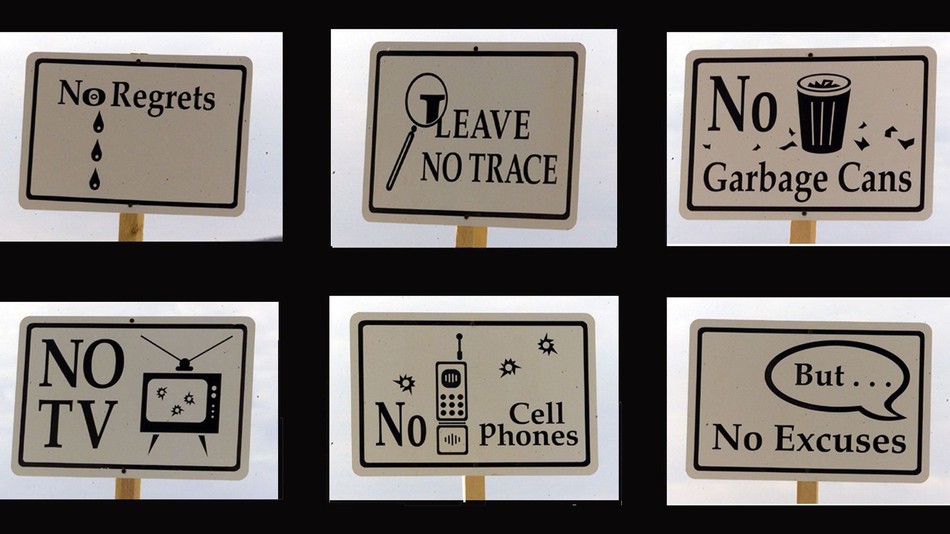
Around 70,000 people from around the world participate in Burning Man. Whether they arrive in RVs or land on the site’s temporary airstrip, the extravagantly costumed pioneers will enter a fenced-off, self-policing utopia without cars or money.
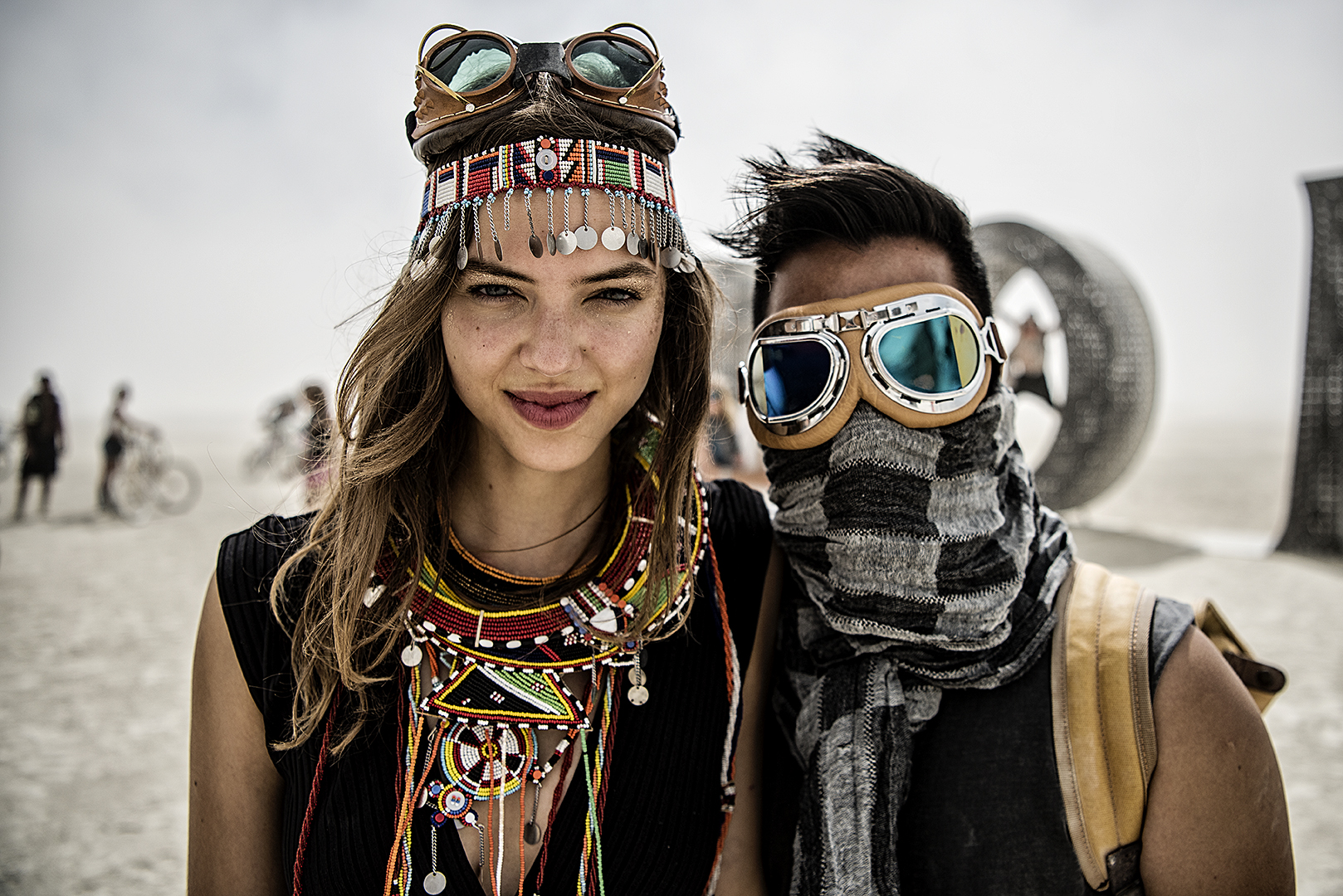
Throughout the week, festivalgoers—otherwise known as “burners”—will build their interactive metropolis in the middle of the desert while participating in a number of immersive activities based on this year’s theme, I, Robot. The focus of the festival will centre on the “many forms of artificial intelligence that permeate our lives; from the humble algorithm and its subroutines that sift us, sort us and surveil us, to automated forms of labor that supplant us,” according to the Burning Man website.
While there will be plenty of experiences and parties taking place over the course of the festival, the biggest event is the annual Burning of the Man ritual, during which a larger-than-life-sized man effigy is set ablaze.
Over the last ten years, Burning Man has grown beyond an annual event into something akin to a cultural movement that has transcended the reach of the event itself.
Although run as a not-for-profit business, the Burning Man Project also supports charity work around the world. One example is its Burners Without Borders initiative, which helps communities to rebuild after natural disasters, or to tackle poverty. It also works to help staff at charities and social enterprises sharpen their skills by attending Burning Men leadership conferences.
“If you haven’t been, you just don’t get it” – Elon Musk
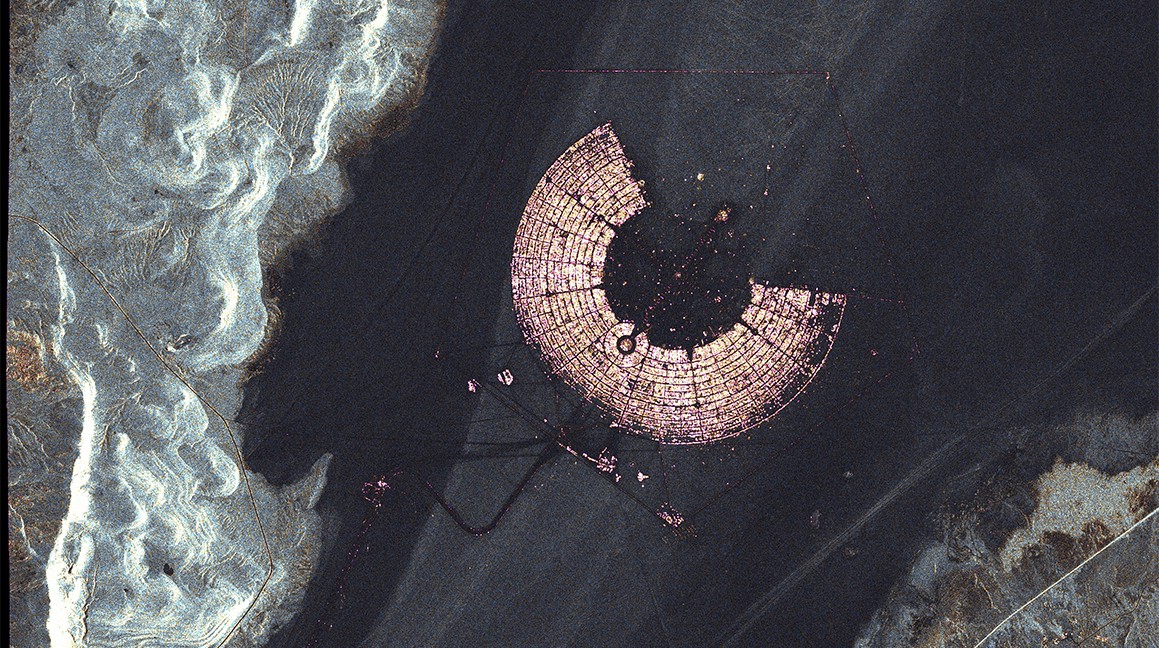
The tech elite have long had a major presence at Burning Man and it has become key to the tech industry. Indeed, Silicon Valley has grown in power since the festival started.
Why Is Burning Man So Popular With The Tech Community?
There’s a simple explanation why the tech community goes to Burning Man – it dismantles your pre-conceived notions about what’s possible. This is an important characteristic for those seeking different solutions to emergent problems, and one that can wane with age as we become more accustomed to life the way it is.
Great startups often come from challenging an underlying premise about how the world operates. Nowhere makes that malleability as tangible as Burning Man.
Indeed, from Burning Man sprung early attempts at self-driving vehicles, as the Disco Fish art car’s pilots sought to make it avoid pedestrians in the inky night.
Techies believe that Burning Man makes them better employees. In fact, the 10 principles that guide the Burning Man movement – including radical self-expression, communal effort, civic participation and immediacy – wouldn’t seem out of place hanging on the wall in just about any tech company’s campus, incubator or startup office.
Tesla CEO and SpaceX founder Elon Musk is a regular at Burning Man, as well as Facebook’s Mark Zuckerberg. Sergey Brin and Larry Page of Google have shown up over the years.

A major driver of Burning Man interest over the last five years or so has been the Silicon Valley-fixation of the festival and what some see as the hostile takeover of its spirit by the 1%. Burning Man has become a status symbol for the tech elite. However, the one-upmanship of San Francisco tech nouveau riche, with their luxury accommodations and chef-prepared meals, is at odds with the spirit of the festival, say some longtime ‘burners.’
In fact, this year’s artificial intelligence theme has led some to question whether Burning Man has, in fact, become a tech festival. In the words of Erik Davis, author of Techgnosis and longtime burner, “major money is getting freaky now.”
Tech CEOs love Burning Man and every year some of the most influential people in Silicon Valley attend the event, dressing in shiny costumes and exploring the art installations just like everyone else.
Most of the richest attendees go unnoticed along with the rest of the crowd. However, some wealthy attendees including the Tech CEOs choose to brave the desert with a little help. According to the New York Times, “sherpas” can be hired, and for large camps, you can see as many as 30 of them for 12 attendees.
“The tech start-ups now go to Burning Man and eat drugs in search of the next greatest app,”according to former sherpa Tyler Hanson. “ Burning Man is no longer a counterculture revolution. It’s now become a mirror of society.”
As well as a playground for the tech community, Burning Man has become a place where CEOs and startuppers can network. People are getting funded, co-founders are meeting, and people are getting hired for startups right on the playa.
In his book, “Stealing Fire,” author and performance expert Steven Kotler explains how the founders of Google — Larry Page and Sergey Brin — found their CEO at Burning Man.
Facebook founder Mark Zuckerberg goes. So does Tesla Motors CEO Elon Musk. And Google founders Sergey Brin and Larry Page. In his book, “Stealing Fire,” author and performance expert Steven Kotler explains how the founders of Google found their CEO at Burning Man.
Anarchists parking Priuses next to ramshackle tents and tarps are now sharing the sand with wealthy techies arriving, via private jets, at luxury desert camps fully staffed with cooks, masseuses and assistants.
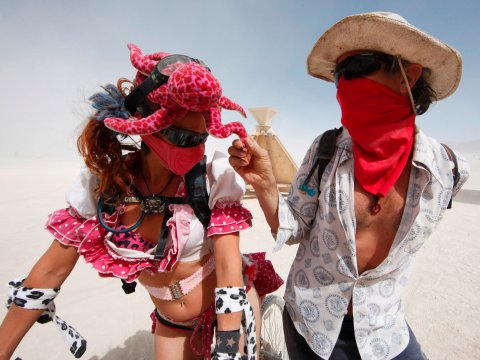
The unwritten rules of the festival encourage anonymity and privacy. But the attendance of some of the CEOs and founders has been revealed by one of their enthusiastic peers on Medium. And many members of the tech elite have found their time on the playa — Burning Man speak for the dusty dry lake bed where the festival takes place — so life-changing that they couldn’t help but speak about it publicly.
The Special Bond Between Silicon Valley & Black Rock City
Sadly, Larry Harvey, the driving force behind Burning Man recently passed away. So this year’s burn will be wilder than ever! He normalized the abnormal, expanding the boundaries of what creators could attempt. That’s why there’s a special bond between Silicon Valley and Black Rock City. Both ditch “what are we supposed to do?” for “what can we do?”. Both encourage risky expression that appears insane to outsiders. And by establishing an open canvas just a few hours’ from San Francisco, Harvey helped entrepreneurs come back freshly invigorated to make change.
Burning Man Powered By Serious Technology Backbone
Burning man is powered by a serious technology backbone. It is built and managed by a woman who knows how to keep the massive event running smoothly through extreme desert conditions.
Meet Heather Gallagher – the woman behind Burning Man tech. Over twenty years ago, Heather traded in her corporate suit for dreadlocks. She brought her technology background to Burning Man and hasn’t looked back.
Tech also underlies major portions of the event itself. Every entry ticket gets scanned, and vehicles leaving and returning during the week are tracked via QR codes.
Event organizers have a microwave link connecting their computer systems to the Internet, although most communications are done either face-to-face or via radio.
One Of The Densest Clustering Of Smartphones On The Planet
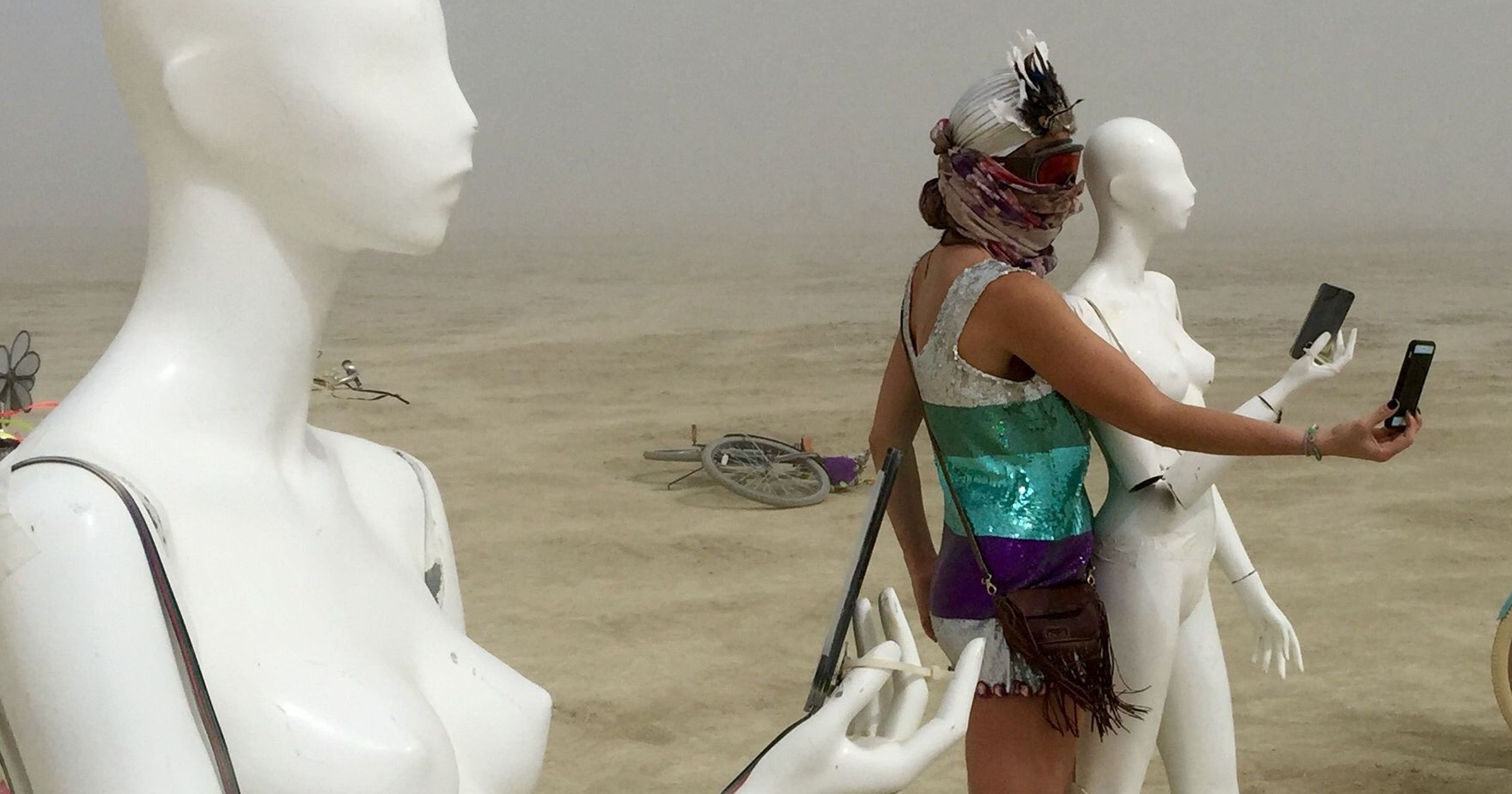
The crowd here is the kind accustomed to always-on Internet access and based on their demographics (70% have at least a bachelor’s degree and 90% are aged 19-60), this is probably one of the densest clusterings of smartphones on the planet.
However, no data service means no Facebooking, Instagramming, Snapchatting or Tweeting. Texting works only sporadically.
And making calls? Service is patchy and when the thick white Playa dust at Burning Man gets into your phone, it dies ! Some of the burners say that’s just the way they like it. Fortunately, for those of you who don’t, here are some gadgets that can help you survive Burning Man without your smartphone from getting ruined.
Burning Man: More High Tech Art Festival Than Rave?
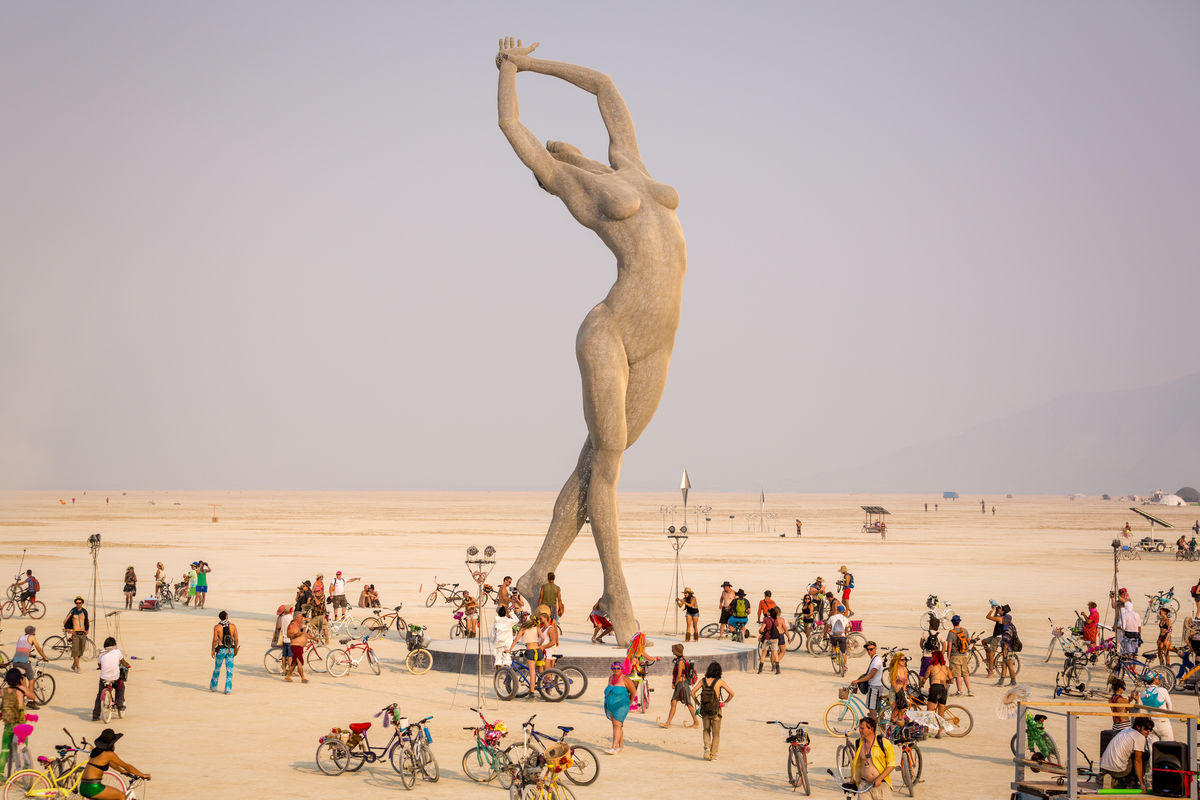
Burning Man is increasingly becoming taken over by tech and the works of art are now more permanent than perishable. There are many large, expensive art installations that have a long shelf life. And technology is increasingly becoming the basis for the large-scale creative works concocted at the festival.
Click here for a preview of this year’s Burning Man’s art and architectural highlights.
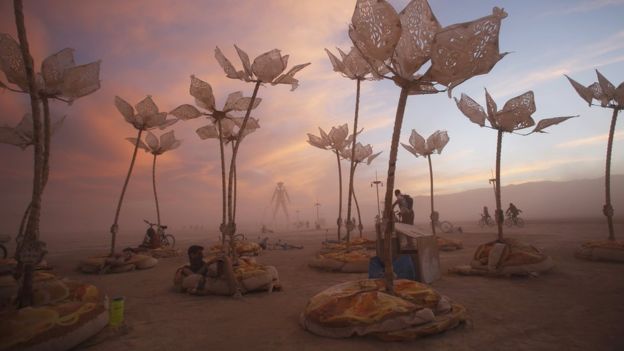
The rave culture of yesteryear has given way to more of a high tech art festival and experiment in temporary community. The event’s true cultural essence forms the focus of “No Spectators: The Art of Burning Man,” an exhibition currently on view in Washington, D.C., held both within the Smithsonian American Art Museum’s Renwick Gallery and its surrounding neighborhood, with some works installed outdoors just around the corner from the White House. (An initial set of these installations will close on September 16th, while others remain on view until January 21, 2019.)
Art thrives at Burning Man & this year’s lineup features the usual dramatic large-scale art installations including a 747 airplane fuselage which will be largest-ever ‘art car’.
There will also be a spiraling wooden pavilion designed by Arthur Mamou-Mani of London-based Mamou-Mani Architects. Named Galaxia, the temple will be formed of 20 timber trusses that spiral up and form a tower as they converge.
Each year, Burning Man erects a huge central temple that is burned at the end of the event.

And so that brings me to the end of my post. So, Long live Burning Man and if you are planning to go this year or in the future don’t forget your goggles!
Editor’s Note:
To discover events like Burning Man and other cool stuff near you including vegan restaurants download Shout – the must-have app for explorers, adventurers, dreamers and creatives!
And if you are looking for events management, blogging (plus copywriting/content writing) and social media support email annie@bijouconcierge.co.uk


